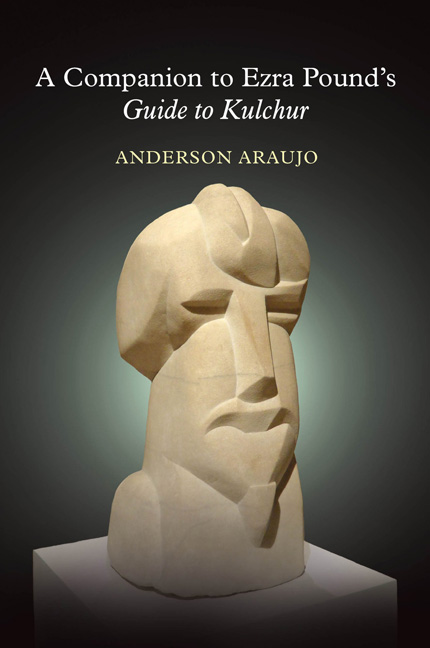Book contents
- Frontmatter
- Contents
- Acknowledgments
- Abbreviations
- Introduction
- Guide to Kulchur
- Part I
- Section I
- Section II
- Part II
- Section III
- Section IV
- Part III
- Section V
- Section VI
- Part IV
- Section VII
- Section VIII
- Section IV
- Part V
- Section X
- 44 Government
- 45 The Recurring Decimal
- 46 Decline Of The Adamses
- 47 Royalty And All That
- Section XI
- Part VI
- Section XII
- Section XIII
- Addenda: 1952
- Notes
- Index
44 - Government
from Section X
- Frontmatter
- Contents
- Acknowledgments
- Abbreviations
- Introduction
- Guide to Kulchur
- Part I
- Section I
- Section II
- Part II
- Section III
- Section IV
- Part III
- Section V
- Section VI
- Part IV
- Section VII
- Section VIII
- Section IV
- Part V
- Section X
- 44 Government
- 45 The Recurring Decimal
- 46 Decline Of The Adamses
- 47 Royalty And All That
- Section XI
- Part VI
- Section XII
- Section XIII
- Addenda: 1952
- Notes
- Index
Summary
Valturio's treatise: Cf. note GK 115.
witan: Members of the national council (witenagemot) of Anglo-Saxon kings (cf. note GK 173).
Lenin won by Radio, Roosevelt used it. Coughlin used it as minority weapon: Vladimir Lenin (1870–1924), the Russian communist who led the Bolshevik Revolution, was an ardent supporter of radio as a means of maximizing the scope and reach of Communist propaganda. The first broadcast of his speeches, recorded between 1919 and 1921, took place on December 8, 1922. Roosevelt (cf. note GK 130–31) produced a series of thirty-one radio broadcasts between 1933 and 1945, which became widely known as “Fireside Chats.” The anti-Semitic Father Charles E. Coughlin (1891–1979) was a notorious Detroit-based Roman Catholic priest known for his inflammatory radio broadcasts, including anti-Roosevelt speeches. When Pound gave his first radio talk on January 11, 1935 on the economic triumph of Italian Fascism, he used Father Coughlin as his model.
jaw-house: i.e., the United States Congress, composed of the Senate and the House of Representatives. Pound is also punning on “jo-house” (privy), as used in The Pisan Cantos (80/533).
rotten houses by A … s, … now reigning: In the unexpurgated GK, this passage reads, “rotten houses by N … s, B … s, S … s, S … s, and the dither of bank-pimps now reigning, Badlewigs, Wigwams, Coop-D … s and Feedons.” Of these obscure nicknames for corrupt financiers and financial institutions, the only one the editor has been able to trace with any certainty is “Wigwams.” Although the term originally designated a dwelling of the North American Indian peoples, it was appropriated in 1789 by the Society of St. Tammany. Formed in New York, the Irish Catholic fraternal and patriotic organization adopted pseudo-Native American titles and rituals, with its headquarters designated as the “Wigwam.” It soon became the most powerful urban political movement in the United States, counting among its early leaders the eighth U.S. vice-president, much admired by Pound, Martin Van Buren (cf. note GK 30).
- Type
- Chapter
- Information
- A Companion to Ezra Pound's Guide to KulcherGuide to Kulcher, pp. 262 - 269Publisher: Liverpool University PressPrint publication year: 2018



